America’s Favorite Race Car Ain’t No Miata
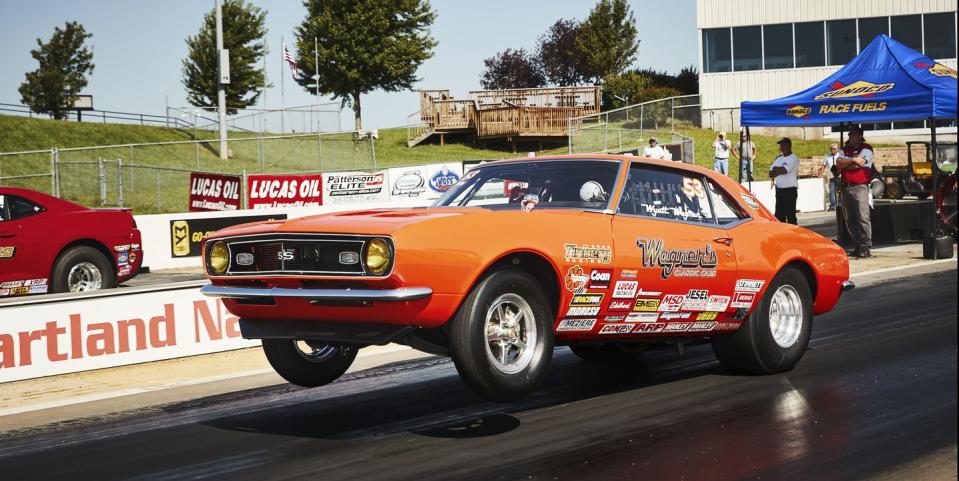
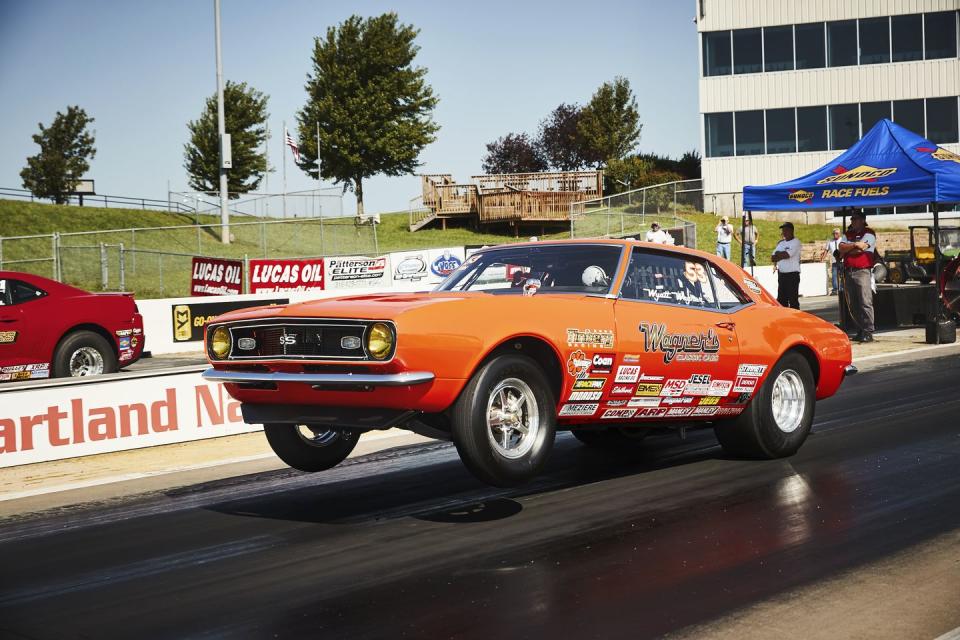
By sheer numbers that no one has audited, the Chevrolet Camaro is America’s favorite racing machine. Okay, maybe there are more Mazda Miatas racing around American road courses than there are Camaros. On America’s drag strips, the Camaro is clearly the most common competitor. Camaros clog America’s dirt ovals. And street racing? It’s illegal and dangerous, and it’s been dominated by Camaros for at least a half century.
“It’s the perfect size,” claims Mark Stielow. “It doesn’t weigh too much, it’s easy to work on, and it looks awesome.” Last year Stielow, who has built and raced first-generation Chevy pony cars for almost 30 years, finished building his 17th ProTouring Camaro. He also became the new head of General Motors Racing.
This story originally appeared in Volume 7 of Road & Track.
SIGN UP FOR THE TRACK CLUB BY R&T FOR MORE EXCLUSIVE STORIES
GM races cars to sell more cars. And racing has always been how the Camaro is sold. During the Camaro’s first model year, 1967, the Z/28 option package included a special 302-cubic-inch small-block V-8 intended to campaign and win in the Sports Car Club of America’s Trans-Am series. It did. The ’69 Camaro ZL1 model was equipped with an all-aluminum, 427-cubic-inch version of the big-block V-8, optimized to dominate drag racing. Road racers have sworn by the 1LE Camaros since the 1980s, and in 2018, Chevy revealed an eCOPO electric Camaro concept for drag racing.
But what the factory does counts for only so much. The Camaro’s racing ubiquity comes down to two factors: price and performance. Chevrolet has built so many Camaros that it’s still easy to buy one out of a junkyard for $1000 or less. Atop that, a Chevy V-8 produces reliable, affordable power. Generations of Americans have grown up wrenching on Chevy small-blocks; almost every old Camaro comes with one. And the breadth of performance parts for these engines—from GM and a mammoth aftermarket industry—is staggering.
Sure, the Camaro was born as Chevy’s me-too knockoff Ford Mustang. And the first one wasn’t much more than a prettied-up Nova. So what? That’s always been enough to keep it the most popular car in American racing. By far. Not that anyone is counting. - John Pearley Huffman
The 1968 Drag Racer
First-Generation Camaros hit the strip beginning in 1967. They’ve never left. And they’re still winning.
By Lawrence Ulrich
A procession of drag racers crawls, two by two, toward the starting line at Heartland Motorsports Park in Topeka, Kansas. Some 650 cars and hopeful drivers have trailered here. Weeks or months of mechanical foreplay are about to pay off with a few seconds of howling pleasure—or crushing disappointment. By sheer numbers, one nameplate dominates a National Hot Rod Association Lucas Oil weekend doubleheader that’s as sticky as the prepped surface: the Chevrolet Camaro. Examples from the Sixties through the present crowd the race grounds, lolling under trailer awnings, hoods open, all awaiting their explosive moment.
Among them is a 1968 Camaro SS driven by 19-year-old Wyatt Wagner. The car is a member of the 1967–69 generation that started it all. Those three model years have become the collectible analogue of midyear Corvettes. Wagner is a third-generation drag racer who inherited Chevy genes from father Scott and grandfather Willie. Other traditions include the popping orange paint that makes the Wagner Racing No. 53 car a stand-out and a pristine approach that hints at the family’s classic-car restoration business. The Chevy’s small-block 350—with period-correct block, heads, and carburetor per Super Stock rules—is spotless enough to be a surgeon’s table.
“If we can’t run good, we can at least look good,”Willie Wagner, 77, says of the handsome Chevy, whose 630 dyno horsepower compares with the claimed 295 it made stock.
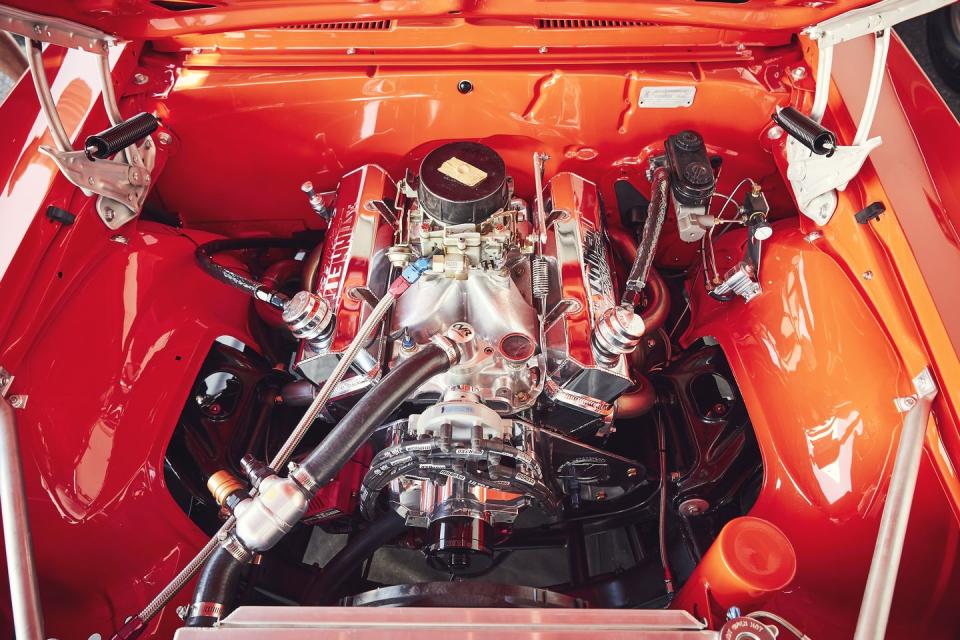
Running good is where Wyatt comes in. At 16, he became the youngest-ever NHRA divisional champ, driving this Camaro to a Super Stock title and two race wins and being named 2018 Rookie of the Year in geographical Division 5. Now 19 and attending college, Wyatt is tall, slim, and sandy haired, with the unshakable poise of a veteran. Which he is: Wagner won his first junior drag race here at Heartland when he was eight years old.
“He just won and won everything he was in,”his grandfather says. “He’s automatic on starts and so consistent with reaction times.”
In this afternoon pass, Wyatt lines up against a ’72 Nova. The racers clean tires with a line-locked burnout and stage at the Christmas tree. Then, ba-BOOM. Wyatt launches the Chevy into a smoking wheelstand, his view of the strip momentarily exchanged for sky. He wins the pass with a 9.939 quarter-mile at 128.48 mph, backing off throttle near the finish to avoid going too fast and “breaking out.” That’s the counterintuitive cardinal sin of handicapped categories like Super Stock, which give slower cars a head start and put a premium on reaction time and driver skill.
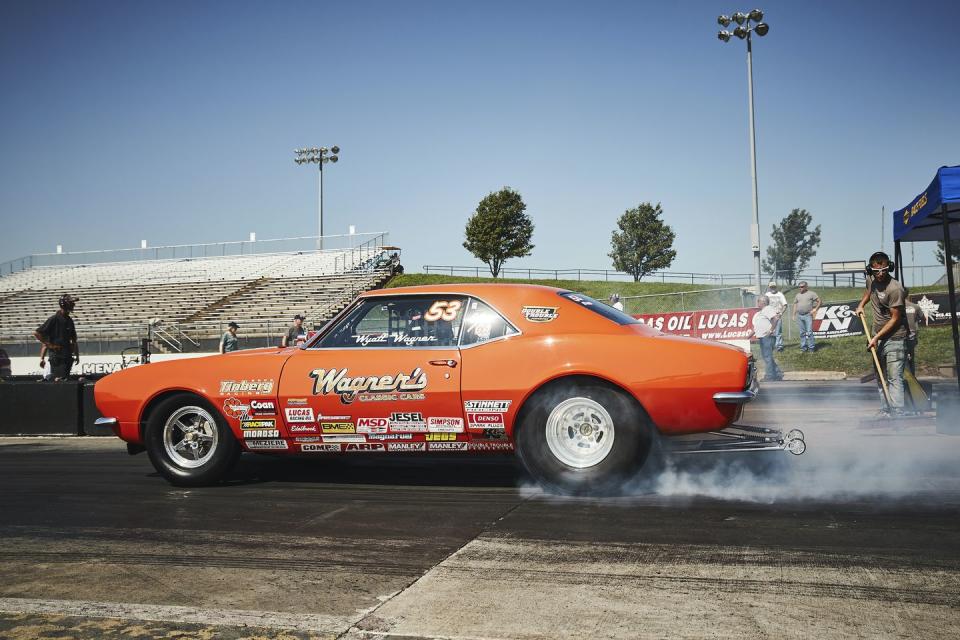
“You want to beat your opponent but by as short a margin as possible,” father Scott says, entering race data into a laptop in a trailer equipped with weather monitoring for some 20 atmospheric metrics.
Running faster than your predicted “dial-in”time is an instant loss unless a competitor fouls or breaks out by a wider margin. On this pass, Wyatt’s dial-in is 9.930; he avoids breaking out by 0.009 second. “It’s a big chess game,” Wyatt says.
It’s a pricey game, too. Around $40,000 for an engine of this caliber, Wyatt figures. Imagine what it takes to coax 630 reliable horses and nearly 9000 rpm from an ancient iron block and vintage Quadrajet carburetor. Four-time NHRA Super Comp champ Gary Stinnett put this engine together. A Coan Racing three-speed transmission runs $7500. A high-school Chevy this ain’t, even if that’s where Camaro love reliably starts. Wyatt’s father bought a ’69 Camaro for $650 as a teenager in the 1980s. Wyatt ended up driving that restored Chevy in high school.
The Wagners’ racing Camaro, meanwhile, is based on a previous ’68 that the family ran. With Wyatt poised to take the wheel, father and son switched it from black to orange paint.
“That was always my favorite car,” Wyatt says of the original Super Stocker. “So, when I got old enough, we got this latest Camaro in 2016 and made it into a near twin.”
The Wagners’ weekend ends against a faster late-model Dodge Challenger. Wyatt gets the head start, whips his opponent’s reaction time, and crosses the stripe about a half car length ahead, running 9.818 at 135.24 mph. He breaks out by 0.002 second. It’s a hard-luck loss, but the team can’t dwell. Upcoming races include an NHRA Nationals race here at Heartland in a few weeks. The orange Camaro, having served as a drag car since 1971—a half century of gladiator duty—has more battles left in those aging bones.
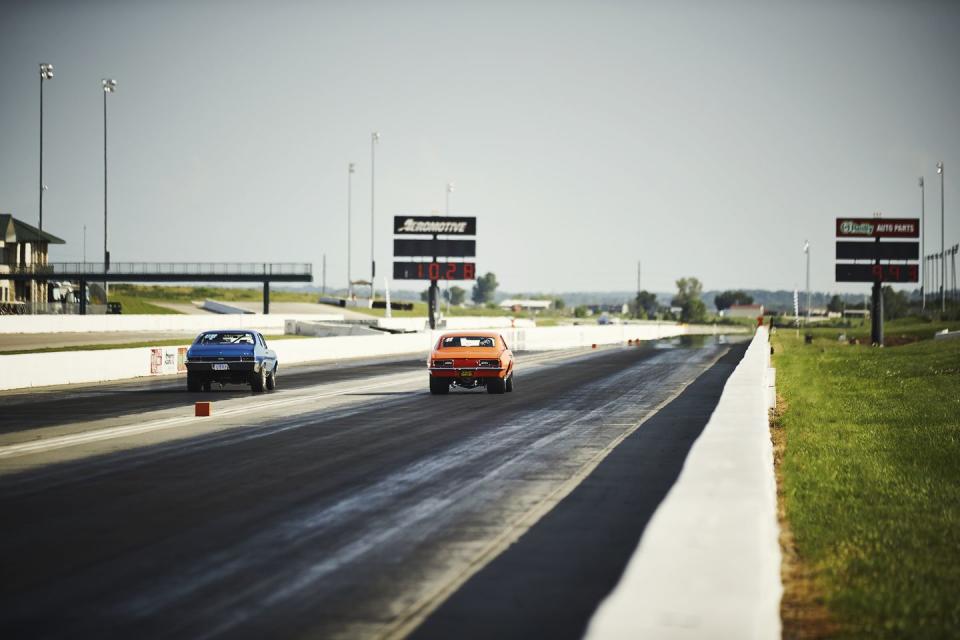
The 1976 Dirt Tracker
Built for easy Seventies cruising, the Second-Generation Camaro sheds its double knits for dirt-track battle armor.
By John Pearley Huffman
From the 1974 model year, when the second-generation F-body grew ugly bumpers, through 1981, when the archaic thing died, GM built 1,249,860 lousy, slow Camaros. The cars were hobbled by primitive emissions controls, bloated curb weights, and atrocities like the Type LT that meant to turn Chevy’s coupe into a “personal luxury car.” It was a bad time for the Camaro yet some-how the model’s best sales years.
“I need some zip ties. Something. Anything. Come on, someone has to have something,” Jeff Brink cries out as friend Tom Stephens Jr. pulls his haphazard red Camaro off the 1/5th-mile clay oval at Ventura Raceway in California. On the pace lap before that afternoon’s Hobby Stock main race inJuly, the Camaro’s hood has come loose and flopped over on the already mangled fender. Made of lightweight aluminum barely thicker than Reynolds Wrap, the hood needs to be pinned down immediately so Stephens can get into the main.
While the hood is being walloped into crude shape, the cry for zips speeds through the pits. Every Dwarf Car, Sprint Car, IMCA Modified, and Hobby Stock team dives into their stockpile. They produce fistfuls of ties to hasten the repair. Stephens puts the Camaro’s Turbo 350 three-speed automatic back into gear and rattles to the back of the orbiting field. The race is on.
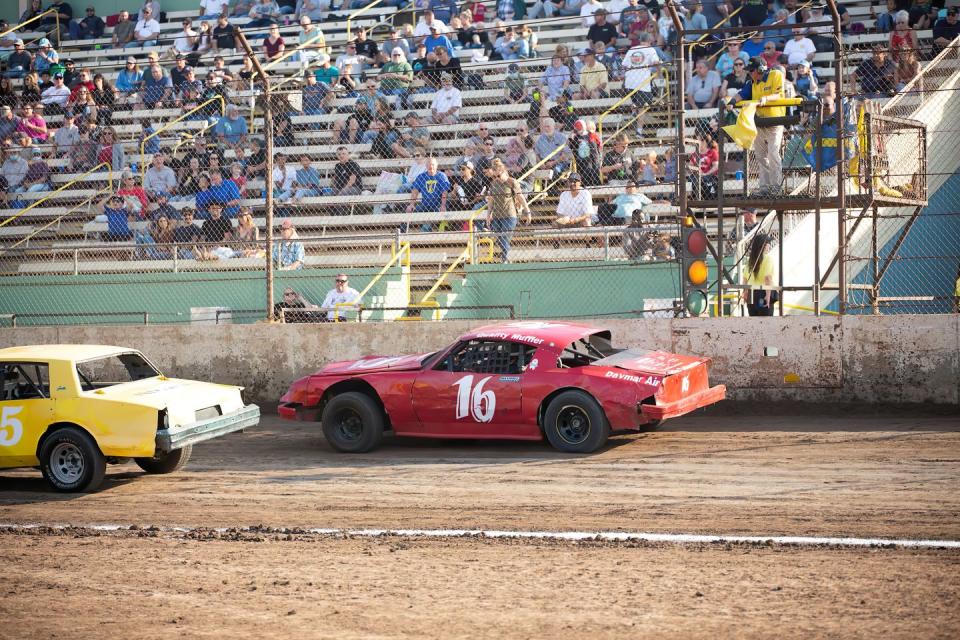
As lousy as those late second-generation Camaros were new, they’re still Camaros: straight forward machines with robust front subframes, decent front suspension, and a solid rear axle hanging on leaf springs. And because there are still so many of them, with so little to recommend them to collectors, they’re much cheaper than first-generation (1967–69) or early second-generation (1970 1⁄2–73) examples. Most of them already have a small-block V-8 under the hood. Though strangled in infancy, they show a lot of racing potential.
“This one is probably a ’76,” Stephens says. “I bought a ’77 steering box and it wouldn’t fit. But the ’76 box bolted right up.”
The Hobby Stock rules at Ventura aren’t overly restrictive or scrupulously enforced. Each car must be rear-wheel drive and generally recognizable as civilian transportation, with stock-type suspension and production floorpan, firewall, and steel roof. Since it became a race car back in 1990, every eligible body panel on the Stephens Camaro has been replaced with sheet aluminum. That and excising all civilizing components dropped the curb weight down to 2920 pounds, despite the added mass of a roll cage. The Stephens brain trust then added barbell plates to the right rear corner to help the car bite coming out of corners on the Ventura track.
The class minimum weight is 3200 pounds. “I weigh about 300 myself, so we’re running at about 3500 pounds,” says the six-foot-five driver. The engine is a Chevy 350 with an aftermarket intake and carb. No real tuning or dyno testing, but it runs well.
Repair thrashes are the high drama of dirt tracks. Stephens tangled with another racer in the preliminary, gashing his left front tire and shredding his fender. But the Stephens crew doesn’t carry spares. They have pop rivets and zip ties, but no duct tape. Limping through the Ventura CountyFairgrounds to the pits, the No. 16 Camaro looks to be in dire shape.
Dire, though, isn’t hopeless. With his friends and father bending metal and mending things, Stephens goes off to hunt down a new tire. There isn’t a lot of time; the main is coming up, and the point of being at the races is to race. There isn’t craft involved so much as experienced desperation. The new tire is mounted moments before the main is called up. Then, remember, that hood debacle.“He keeps fixing it,” Tom Stephens Sr. says with a veteran racer’s sigh. “But he could get another body for, like, $500.”
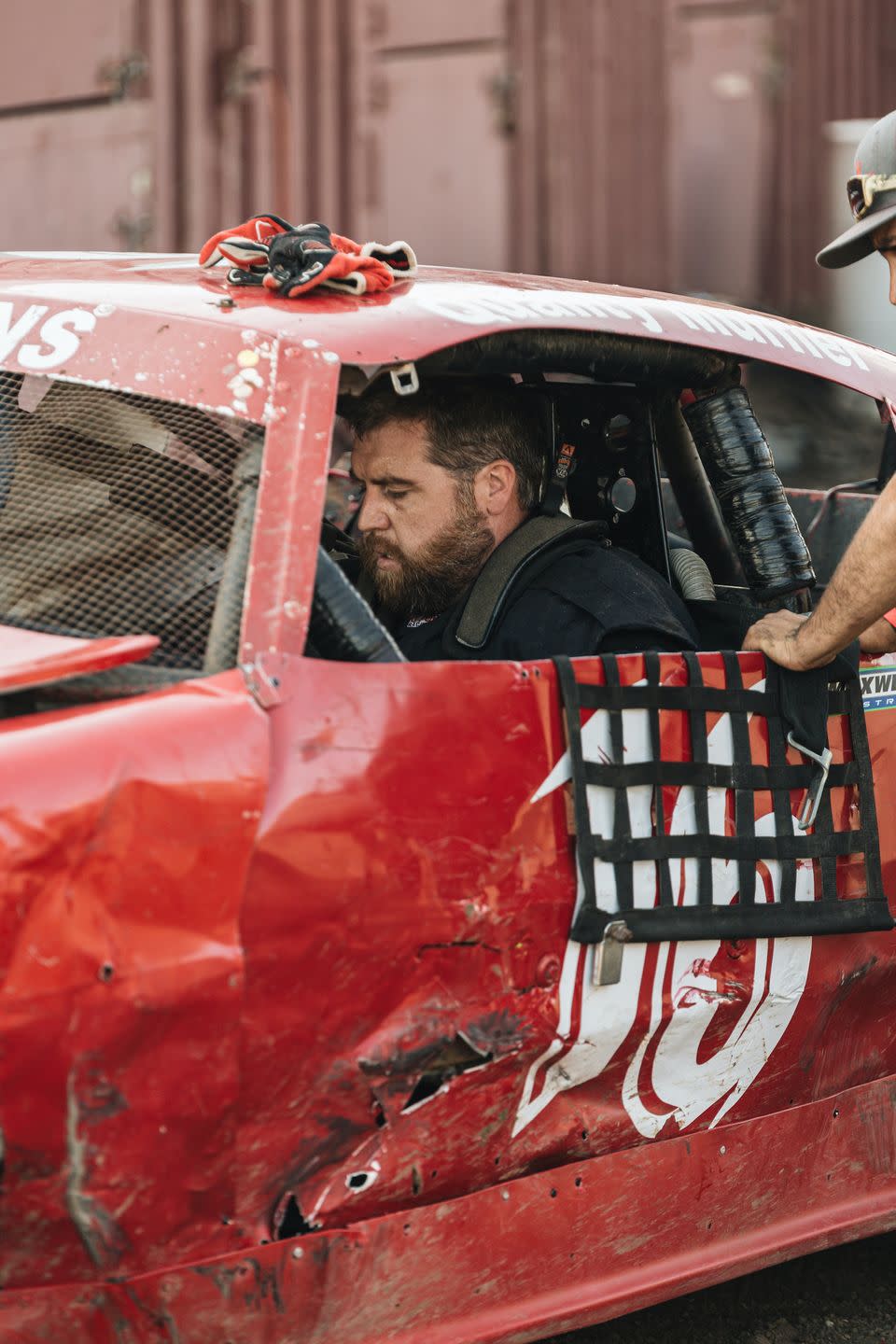
The younger Stephens insists that he doesn’t mind. “I care about how it runs,” he says. “And this one is a proven winner. Two track championships, and last year we lost the season title on the last lap of the last race. It’s a good Camaro.”

A family friend bought this Chevy in 1996. Stephens Sr. bought it in 2012 and raced it a bit. Stephens Jr., now 35, began racing it in 2013. Nine-year-old Tom Stephens III, who’s running in quarter midgets now, should be the third Stephens to race this Camaro at this track.
Stephens Jr. can’t make his beat Camaro workin the main this afternoon. He finishes last, but he finishes. Thoroughly bashed but running.
It’s a story that happens at just about every dirt track, just about every weekend. It usually involves a Camaro.


 Yahoo Autos
Yahoo Autos 